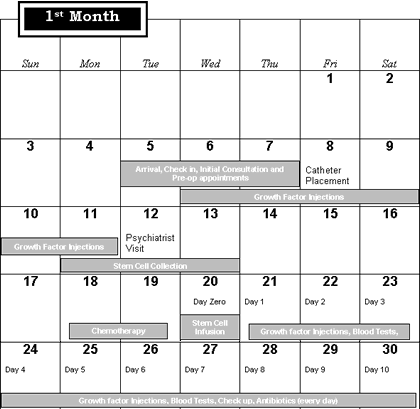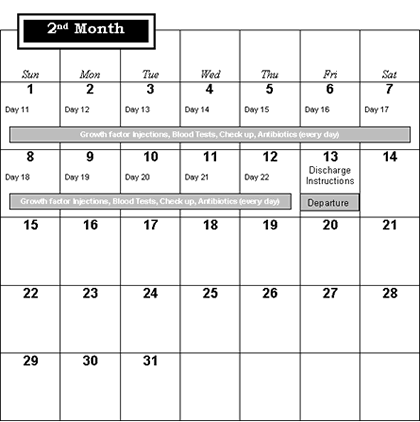Primary AL
Description and Background
AL amyloidosis is a hematological disorder, associated with plasma cell dyscrasia that means an abnormal condition of blood cells [from Greek dyskrasia, literally "bad mixture,"], in which extra-cellular insoluble protein (amyloid) fibrils accumulate in various tissues and organs throughout the body. These amyloid fibrils, formed by an errant (monoclonal) group of plasma cells in the bone marrow, consist of abnormal immunoglobulin (Ig) light chain proteins (M proteins). Except for those within the central nervous system, amyloid fibrils can affect any major organ in the body. The most common organs affected are the kidney, heart, liver, and autonomic or peripheral nerves.
AL amyloidosis is a rare disease; only 1200 to 3200 new cases are reported each year in the United States. It is similar in many ways to multiple myeloma, another plasma cell dyscrasia. In multiple myeloma, plasma cells proliferate and accumulate in the patient's bone marrow, replacing healthy tissue, and produce M-proteins. Two thirds of patients with AL amyloidosis are male and less then 5% of patients are under 40 years of age. Both the causes and origins of AL amyloidosis along with the mechanism of amyloid deposition remain poorly understood.
The clinical course of AL amyloidosis is usually associated with rapid disease progression and involvement of multiple organ systems. Survival depends on:
- How soon after the onset of symptoms you start treatment
- The aggressiveness of the disease (it seems to vary for each individual)
- Which body organs are involved and to what degree
- The age and general health of the patient
In primary (AL) amyloidosis, the organs most often involved include the heart, kidneys, nervous system, and gastrointestinal tract. Amyloid deposits in these organs can cause shortness of breath, fatigue, edema (swelling of ankles and legs), dizziness upon standing, a feeling of fullness in the stomach (especially after eating), diarrhea, weight loss, enlarged tongue, numbness of the legs and arms, and protein in the urine.
Primary AL Amyloidosis Treatments Options
Under treatment options we include some very high level discussion on:
- Stem Cell Transplant (SCT) & Hi Dose Chemotherapy which is the most aggressive treatment to date for those who can qualify for it. It is showing a great deal of promise.
- Patients ineligible for ASCT are usually treated with standard oral Melphalan and Prednisone, but the response rate to this regimen is unsatisfactory and time to response is long. Melphalan with High-dose Dexamethasone (M-Dex) is effective and well tolerated in patients with AL (primary) amyloidosis ineligible for stem cell transplantation and provides a rapid response time. M-Dex represents a feasible and effective therapeutic option for patients with advanced AL who are ineligible for ASCT.
- IV Chemotherapy in the form of VAD/C-VAMP, IDM (Intermediate dose Melphalan) or HDM (High dose Melphalan). Cycles of Melphalan are administered intravenously without stem cell transplantation.
- VELCADE (bortezomib) is the first of a new class of drugs called proteasome inhibitors and represents a new treatment option. Originally developed for Multiple Myeloma, clinical trials are underway at amyloidosis centers for AL amyloidosis patients. In some cases the drug may be administered in combination with other treatments.
- REVLIMID (lenalidomide) (CC-5013) is a immunomodulatory drug; a derivative of thalidomide with fewer side effects. It is administered as a single agent and in combination with dexamethasone, for the treatment of AL amyloidosis. Findings from initial trials indicate that lenalidomide can be effective in treating AL amyloidosis.
There are likely other primary treatment options that we will try to include in the future. However, at present the treatment of AL Amyloidosis is limited. The main approach to treatment is two fold.
LIMITING PRODUCTION - Treatment is aimed at reducing or eliminating the bone marrow disorder i.e. the plasma cells that are responsible for producing the Amyloid, thereby limiting or halting the production of Amyloid. These treatments usually involve the use of chemotherapy.
When the production of Amyloid is reduced. The existing Amyloid deposits may slowly regress, alleviating some, if not all symptoms.
Chemotherapy can be taken in periodic low dose usually in pill form. The most common are Melphalan(Alkeran) or Cytoxin(cyclophosphamide). Frequently an additional dose of a steroid drug is also given orally and usually consists of prednisone or Dexamethasone. Sometimes just Dex is given to see if there is an initial response and sometimes may be used to prolong an initial response.(there was a small clinical trial that indicated Dex alone was not effective).
Chemotherapy can also be taken in high dose form and it goes by several different names such as stem cell transplant, stem cell rescue, autologous stem cell transplant, etc. Evidence is cautiously emerging that suggests the clinical benefit of using AuSCT in conjunction with high-dose chemotherapy (HDCT) regimens to either slow the progression or stop further production of the disease in patients. The idea is to try and eliminate all the bad plasma cells in the bone marrow then re-grow the bone marrow using the patient's own stem cells.
Other/Maintenance Treatments
There are other therapeutic approaches to trying to stop the production of Amyloid but so far the results are not as established as "chemo". This section does not yet provide a detailed discussion of Secondary/Maintenance Treatments. The list includes, but, is not limited to:
- Thalidomide - Anti-Angiogenesis drugs such as Thalidomide(Thalomid) are now in clinical trials to determine its effects. It has been previously used to treat Multiple Myeloma with a 25% response rate in those that have failed chemo. There are variations of Thalidomide that are being looked at that may lessen its side effects or allow a higher dose. You can find out more about thalidomide from the maker, Celgene, at http://www.celgene.com.
- SCT & Hi Dose Chemo (sometimes it is done a second time)
- Oral Melphalan & Prednisone
- DEX - Dexamethasone
- Interferons (in-ter-FEER-ons) - are substances naturally produced by cells in the body to help fight infections and tumors. They may also be synthetic (man-made) versions of these substances.
- 2-chlorodeoxyadenosine (2-CdA) - Sometimes referred to as Cladribine (KLAD-ri-been) and belongs to the group of medicines called antimetabolites. Typically, it is used to treat hairy cell leukemia, a cancer of the blood and bone marrow.
- VAD is chemotherapy with a combination of Vincristine, doxorubicin [Adriamycin], and the corticosteroid, Dexamethasone. Vincristine and doxorubicin are administered simultaneously, and continuously as an infusion for 4 days. Dexamethasone is taken in tablet form, for 4 days, which may be repeated twice with 4-day rest intervals. VAD is repeated approximately every 28 days. VAD may be used in patients with acute renal insufficiency. Because VAD is less toxic to stem cells than MP (Melphalan and Prednisone), it may be used in patients who are being considered for autologous stem cell transplantation.
Several of the drugs mentioned above may also be prescribed in combination with one another. This "cocktail" approach to medication is showing some promise and are in several clinical trials.
Please note, we like to stick to therapy that is currently in use or in trials. This section at some point will also include some self-help issues such as diet, nutrition and exercise for the amyloid patient.
Description of Stem Cell Transplantation (AuSCT)
Stem cell transplantation is defined as a process in which stem cells, immature cells from which all blood cells develop, are harvested from either a patient's or donor's bone marrow or peripheral blood for intravenous infusion. Your blood is passed through a machine that removes the stem cells (immature cells from which all blood cells develop), then returns your blood to you. This procedure is called leukapheresis and, for amyloidosis patients, usually takes 1 to 3 days to complete. The stem cells are treated with drugs and then frozen until transplanted into a recipient. The transplant can be used to effect hematopoietic reconstitution (rebuild the bone marrow) following high doses of chemotherapy and/or radiation therapy. There are two main types of bone marrow transplantation: allogeneic and autologous. Allogeneic stem cell transplantation is a procedure in which stem cells or bone marrow is obtained from a healthy donor. AuSCT restores stem cells using the patient's own previously harvested cells.
AuSCT with Hi-Dose Chemotherapy Sample Treatment Plan (Outpatient)
This is a typical schedule. Depending on how well the patient tolerates the procedure, the overall length of time will vary. Some may complete it in 5 weeks other may need 8 weeks.


At this point you may not understand everything on the calendar. It will be vary somewhat for each individual. Wherever you go for treatment and if they offering you an AuSCT, then it is essential that you work out the details of the treatment plan.
Once you begin it is essential that you have a caregiver/companion, as you will require a great deal of attention. Your caregiver will do for you what you cannot do (e.g. drive, wash clothes, fix meals, etc.) Your job at this point is to concentrate on getting well.
In the days leading up to day zero, it is all preparation. Your caregiver is "learning the ropes". He or she needs to know who the doctors and nurses are; where things are kept to keep you comfortable; manage your schedule; learn to manage your medications; see to your personal hygiene and nutrition; arrange for transportation to/from the clinic; monitor your general condition; be the interface between you and your doctors; help cope with bouts of depression; provide moral support; and just be there to help you.
There are lots of things to think about. At around day 3 you will be feeling the effect of the chemo. You will become lethargic and fatigued. You will lose your appetite. The medications are (and there are lots of them) essential to your recovery. The caregiver must ensure that you get the proper allotment of medications 3 times per day. You will be given things to keep your mouth clean….use it. Your caregiver must follow-up and make sure you do these things morning, noon and night. Remember you have no immune system at this point. Bacteria that you came into contact with day-to-day before can now make you quite ill or even cause you to die. You caregiver must keep things clean. You and your caregiver must wash your hands regularly and dry them using disposable paper towels. Do not stock up fresh, fruits or vegetables; you can't have them. (No fresh flowers either!). Ask the nurses or other amyloidosis patients what kind of food to have on hand. Many will say things that are sealed, such as canned, soft foods, for example, pudding, jello, and Popsicles. Also, toast and scrambled eggs are always good. Regarding drinks, things like Carnation Instant Breakfast or Ensure that has vitamin supplements are also excellent.
For more information, click here to visit the BMT Info Net.
DISCLAIMER
The information provided at this site is to be used for informational purposes only. Our foundation does not engage in the practice of medicine. In all cases, we recommend that you consult your own physician regarding any course of treatment or medicine. Furthermore, we are not responsible for any errors in the information content which was obtained from sources believed to be reliable.
